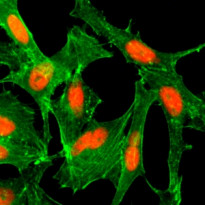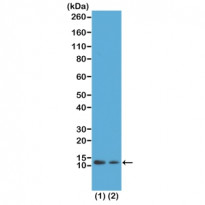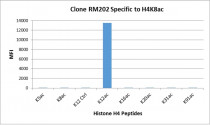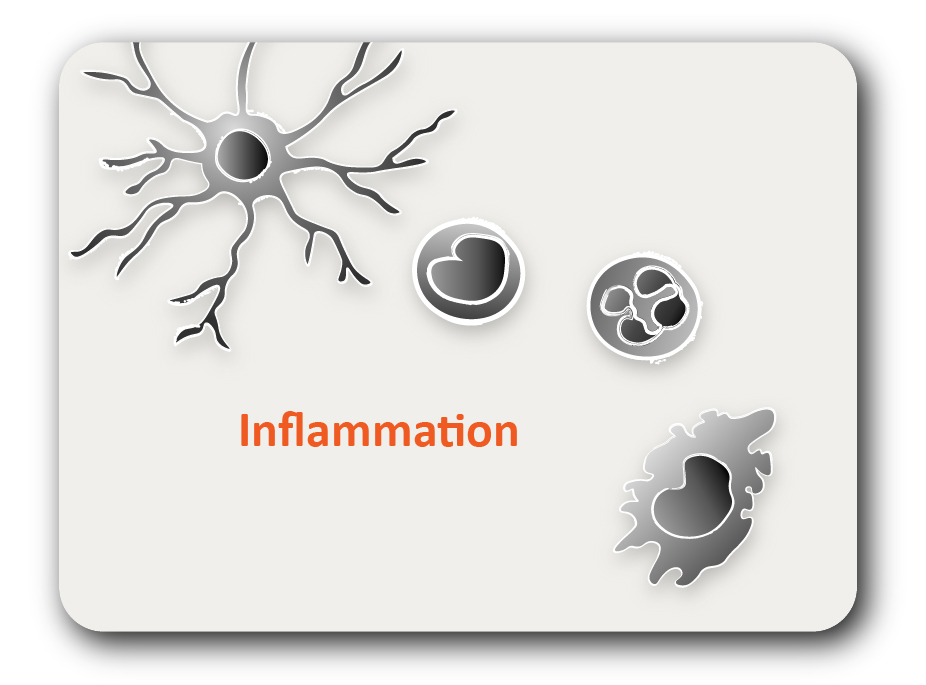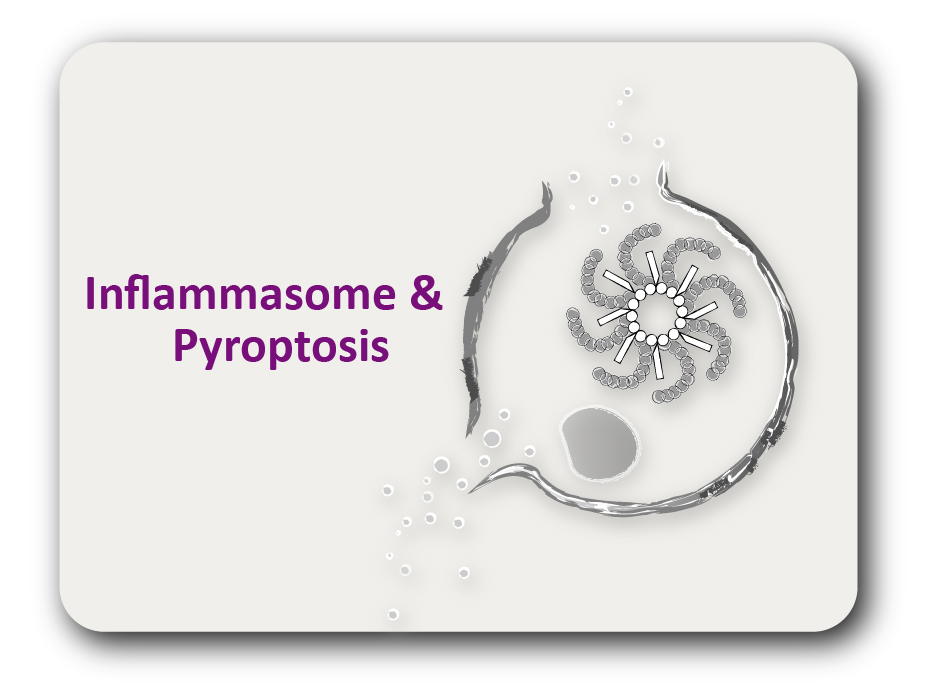ARG57208
anti-Histone H4 acetyl (Lys12) antibody [RM202]
anti-Histone H4 acetyl (Lys12) antibody [RM202] for ICC/IF,Western blot and Human
概述
| 产品描述 | Rabbit Monoclonal antibody [RM202] recognizes Histone H4 acetyl (Lys12) |
|---|---|
| 反应物种 | Hu |
| 应用 | ICC/IF, WB |
| 特异性 | This antibody reacts to Histone H4 acetylated at Lysine 12 (K12ac). No cross reactivity with other acetylated Lysines in Histone H4. |
| 宿主 | Rabbit |
| 克隆 | Monoclonal |
| 克隆号 | RM202 |
| 同位型 | IgG |
| 靶点名称 | Histone H4 |
| 抗原物种 | Others |
| 抗原 | An acetyl-peptide corresponding to Acetyl-Histone H4 (Lys12). |
| 偶联标记 | Un-conjugated |
| 別名 | H4/p; Histone H4 |
应用说明
| 应用建议 |
|
||||||
|---|---|---|---|---|---|---|---|
| 应用说明 | * The dilutions indicate recommended starting dilutions and the optimal dilutions or concentrations should be determined by the scientist. |
属性
| 形式 | Liquid |
|---|---|
| 纯化 | Purification with Protein A. |
| 缓冲液 | PBS, 0.09% Sodium azide, 50% Glycerol and 1% BSA. |
| 抗菌剂 | 0.09% Sodium azide |
| 稳定剂 | 50% Glycerol and 1% BSA |
| 浓度 | 1 mg/ml |
| 存放说明 | For continuous use, store undiluted antibody at 2-8°C for up to a week. For long-term storage, aliquot and store at -20°C. Storage in frost free freezers is not recommended. Avoid repeated freeze/thaw cycles. Suggest spin the vial prior to opening. The antibody solution should be gently mixed before use. |
| 注意事项 | For laboratory research only, not for drug, diagnostic or other use. |
生物信息
| 数据库连接 | |
|---|---|
| 基因名称 | HIST4H4 |
| 全名 | histone cluster 4, H4 |
| 背景介绍 | Histones are basic nuclear proteins that are responsible for the nucleosome structure of the chromosomal fiber in eukaryotes. Nucleosomes consist of approximately 146 bp of DNA wrapped around a histone octamer composed of pairs of each of the four core histones (H2A, H2B, H3, and H4). The chromatin fiber is further compacted through the interaction of a linker histone, H1, with the DNA between the nucleosomes to form higher order chromatin structures. This gene is intronless and encodes a replication-dependent histone that is a member of the histone H4 family. Transcripts from this gene lack polyA tails; instead, they contain a palindromic termination element. [provided by RefSeq, Aug 2015] |
| 生物功能 | Core component of nucleosome. Nucleosomes wrap and compact DNA into chromatin, limiting DNA accessibility to the cellular machineries which require DNA as a template. Histones thereby play a central role in transcription regulation, DNA repair, DNA replication and chromosomal stability. DNA accessibility is regulated via a complex set of post-translational modifications of histones, also called histone code, and nucleosome remodeling. [UniProt] |
| 翻译后修饰 | Acetylation at Lys-6 (H4K5ac), Lys-9 (H4K8ac), Lys-13 (H4K12ac) and Lys-17 (H4K16ac) occurs in coding regions of the genome but not in heterochromatin. Citrullination at Arg-4 (H4R3ci) by PADI4 impairs methylation. Monomethylation and asymmetric dimethylation at Arg-4 (H4R3me1 and H4R3me2a, respectively) by PRMT1 favors acetylation at Lys-9 (H4K8ac) and Lys-13 (H4K12ac). Demethylation is performed by JMJD6. Symmetric dimethylation on Arg-4 (H4R3me2s) by the PRDM1/PRMT5 complex may play a crucial role in the germ-cell lineage. Monomethylated, dimethylated or trimethylated at Lys-21 (H4K20me1, H4K20me2, H4K20me3). Monomethylation is performed by SET8. Trimethylation is performed by KMT5B and KMT5C and induces gene silencing. Phosphorylated by PAK2 at Ser-48 (H4S47ph). This phosphorylation increases the association of H3.3-H4 with the histone chaperone HIRA, thus promoting nucleosome assembly of H3.3-H4 and inhibiting nucleosome assembly of H3.1-H4. Ubiquitinated by the CUL4-DDB-RBX1 complex in response to ultraviolet irradiation. This may weaken the interaction between histones and DNA and facilitate DNA accessibility to repair proteins. Monoubiquitinated at Lys-92 of histone H4 (H4K91ub1) in response to DNA damage. The exact role of H4K91ub1 in DNA damage response is still unclear but it may function as a licensing signal for additional histone H4 post-translational modifications such as H4 Lys-21 methylation (H4K20me). Sumoylated, which is associated with transcriptional repression. Crotonylation (Kcr) is specifically present in male germ cells and marks testis-specific genes in post-meiotic cells, including X-linked genes that escape sex chromosome inactivation in haploid cells. Crotonylation marks active promoters and enhancers and confers resistance to transcriptional repressors. It is also associated with post-meiotically activated genes on autosomes. |
检测图片 (3) Click the Picture to Zoom In
-
ARG57208 anti-Histone H4 acetyl (Lys12) antibody [RM202] ICC/IF image
Immunofluorescence: HeLa cells treated with sodium butyrate, stained with ARG57208 anti-Histone H4 acetyl (Lys12) antibody [RM202] (red). Actin filaments have been labeled with fluorescein phalloidin (green).
-
ARG57208 anti-Histone H4 acetyl (Lys12) antibody [RM202] WB image
Western blot: Acid extracts of HeLa cells 1) treated or 2) untreated with sodium butyrate, stained with ARG57208 anti-Histone H4 acetyl (Lys12) antibody [RM202] at 0.5 µg/ml, showed a band of Histone H4 acetylated at Lysine 12 in HeLa cells.
-
ARG57208 anti-Histone H4 acetyl (Lys12) antibody [RM202] Specificity test image
ARG57208 anti-Histone H4 acetyl (Lys12) antibody [RM202] specifically reacts to Histone H4 acetylated at Lysine 12 (K12ac). No cross reactivity with unmodified Lysine 16 (K16 ctrl), acetylated Lysine 5 (K5ac), Lysine 8 (K8ac), Lysine 16 (K16ac), Lysine 20 (K20ac), Lysine 31 (K31ac), or Lysine 91 (K91) in Histone H4.
